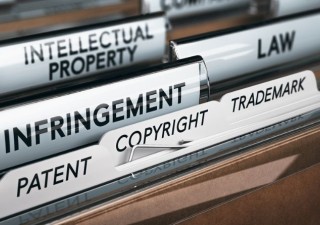Intellectual Property Office of Singapore Case Summary: Bigfoot Internet Ventures Pte Ltd v Apple Inc. [2017] SGIPOS 4
20 February 2017
![Intellectual Property Office of Singapore Case Summary: Bigfoot Internet Ventures Pte Ltd v Apple Inc. [2017] SGIPOS 4](https://www.asiaiplaw.com/img/no-image-x-large.png)
This case concerns an application by Bigfoot Internet Ventures Pte Ltd (“Bigfoot”) to revoke, on the basis of non-use, the registered trade mark “SHERLOCK” (in respect of “computer software; all included in Class 9”) in the name of Apple Inc. (“Apple”).
Sherlock was a software application integrated into version 8.5 of the Macintosh computer operating system, Mac OS. It had two primary functions: (1) conducting internet searches; and (2) carrying out file searches within the Mac OS system. On 17 October 1998, Apple launched the iMac and Mac OS 8.5 in Singapore. On 18 December 1998, Apple applied to register, and later obtained registration of, the trade mark “SHERLOCK”. Subsequently, newer versions of Mac OS were released and for a time, the Sherlock search tool was updated along with these newer versions of Mac OS. There were two software updates where Sherlock was expressly referenced: Mac OS X Update Combo 10.2.4 (made available on 13 February 2003) and Mac OS X Update Combo 10.2.8 (made available on 14 November 2007). Sherlock was later replaced by “Spotlight” and “Dashboard” in Mac OS X 10.4 Tiger, and eventually removed altogether from Mac OS with the release of Mac OS X 10.5 Leopard in 2007. Sherlock is incompatible with Mac OS X 10.6 Snow Leopard and later versions of Mac OS.
To defend its registered trade mark in a non-use revocation, Apple has to prove genuine use of the trade mark within the two time periods under consideration: (1) 6 March 2001 to 5 March 2006 (the “First 5-Year Period”); and (2) 12 March 2010 to 11 March 2015 (the “Second 5-Year Period”).
The Registrar found that “SHERLOCK” was used in Singapore prior to the First 5-Year Period on 17 October 1998 (with the launch of Mac OS 8.5 and the iMac) and continued throughout the First 5-Year Period. In arriving at this conclusion, the Registrar was persuaded that there were existing Mac OS users (and therefore Sherlock users) in Singapore throughout the First 5-Year Period. Further, Apple had provided post-sale product support for Sherlock via upgrades and updates to users in Singapore. Specifically, it had made available, for download, the Mac OS X Update Combo 10.2.4 (which expressly referenced Sherlock) on 13 February 2003 (within the First 5-Year Period) and the Registrar accepted that this, independently of any new sales of Mac OS, amounted to genuine use of the “SHERLOCK” mark.
However, the same could not be said of the Second 5-Year Period. Critically, Sherlock was no longer part of the Mac OS from around 2007 onwards (before the start of the Second 5-Year Period), and the final software update for the Sherlock application was Mac OS X Update Combo 10.4.11 (made available on 14 November 2007, between the First and Second 5-year Period). With the effluxion of time, and the obsolescence of Sherlock, Apple was expected to provide adequate evidence to persuade the Registrar that “SHERLOCK” was used within the Second 5-Year Period, notwithstanding indications that Sherlock had been phased out. Without, for instance, evidence that there were downloads of the online updates by Singapore users in the Second 5-Year Period, the Registrar was not persuaded that “SHERLOCK” was put to genuine use within that time. The registration for “SHERLOCK” was therefore revoked from 12 March 2015, the date of the application for revocation.
This case is interesting as it was acknowledged that online, post-sale support in the form of upgrades and updates of software could potentially amount to evidence of use in Singapore. However, the application of this would turn on the unique facts of each case.






